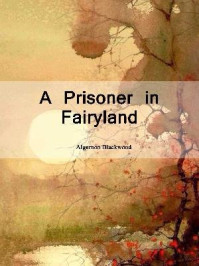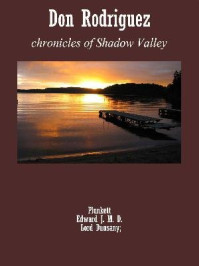




THE ANDALS ORIGINATED in the lands of the Axe, east and north of where Pentos now lies, though they were for many centuries a migratory people who did not remain in one place for long. From the heartlands of the Axe—a great spur of land surrounded on all sides by the Shivering Sea—they traveled south and west to carve out Andalos: the ancient realm the Andals ruled before they crossed the narrow sea.
Andalos stretched from the Axe to what is now the Braavosian Coastlands, and south as far as the Flatlands and the Velvet Hills. The Andals brought iron weapons with them and suits of iron plates, against which the tribes that inhabited those lands could do little. One such tribe was the hairy men; their name is lost, but they are still remembered in certain Pentoshi histories. (The Pentoshi believe them to be akin to the men of Ib, and the histories of the Citadel largely agree, though some argue that the hairy men settled Ib, and others that the hairy men came first from Ib.)
The fact that the Andals forged iron has been taken by some as proof that the Seven guided them—that the Smith himself taught them this art—and so do the holy texts teach. But the Rhoynar were already an advanced civilization at this time, and they too knew of iron, so it takes only the study of a map to realize that the earliest Andals must have had contact with the Rhoynar. The Darkwash and the Noyne lay directly in the path of the Andals’ migration, and there are remnants of Rhoynish outposts in Andalos, according to the Norvoshi historian Doro Golathis. And it would not be the first time that men learned of the working of iron from the Rhoynar; it is said that the Valyrians learned the art from them as well, although the Valyrians eventually surpassed them.
For thousands of years the Andals abided in Andalos, growing in number. In the oldest of the holy books, The Seven-Pointed Star, it is said that the Seven themselves walked among their people in the hills of Andalos, and it was they who crowned Hugor of the Hill and promised him and his descendants great kingdoms in a foreign land. This is what the septons and septas teach as the reason why the Andals left Essos and struck west to Westeros, but the history that the Citadel has uncovered over the centuries may provide a better reason.

Andal adventurers in the Vale, with the Mountains of the Moon in the distance. ( illustration credit 19 )

A n old legend told in Pentos claims that the Andals slew the swan maidens who lured travelers to their deaths in the Velvet Hills that lie to the east of the Free City. A hero whom the Pentoshi singers call Hukko led the Andals at that time, and it is said that he slew the seven maids not for their crimes but instead as sacrifice to his gods. There are some maesters who have noted that Hukko may well be a rendering of the name of Hugor. But even more so than in the Seven Kingdoms, ancient legends from the east must be distrusted. Too many peoples have traveled back and forth, and too many legends and tales have mingled.

For a few centuries, as the Andals prospered in the Hills of Andalos, they were left more or less to themselves. But with the fall of Old Ghis came the great surge of conquest and colonization from the Freehold of Valyria, as they expanded their domains and sought more slaves. At first, the Rhoyne and the Rhoynar served as a buffer. By the time the Valyrians reached that great river, they found it difficult to make a crossing in force. The dragonlords might not be troubled, but the foot- and horsemen found it daunting in the face of Rhoynish resistance, given that the Rhoynish were by now as powerful as Ghis at its height. There was a truce for years between the Valyrians and the Rhoynar, but it only protected the Andals so far.
At the mouth of the Rhoyne, the Valyrians founded the first of their colonies. There, Volantis was raised by some of the wealthiest men of the Freehold in order to gather up the wealth that flowed down the Rhoyne, and from Volantis their conquering forces crossed the river in great strength. The Andals might have fought against them at first, and the Rhoynar might even have aided them, but the tide was unstoppable. So it is likely the Andals chose to flee rather than face the inevitable slavery that came with Valyrian conquest. They retreated to the Axe—the lands from which they had sprung—and when that did not protect them, they retreated farther north and west until they came to the sea. Some might have given up there and surrendered to their fate, and others still might have made their last stand, but many and more made ships and sailed in great numbers across the narrow sea to the lands of the First Men in Westeros.
The Valyrians had denied the Andals the promise of the Seven on Essos, but in Westeros they were free. Made zealous by the conflict and flight, the warriors of the Andals carved the seven-pointed star upon their bodies and swore by their blood and the Seven not to rest until they had hewn their kingdoms from the Sunset Lands. Their success gave Westeros a new name: Rhaesh Andahli —the Land of the Andals, as the Dothraki now name it.
It’s agreed by the septons, the singers, and the maesters alike that the first place where the Andals landed was on the Fingers in the Vale of Arryn. Carvings of the seven-pointed star are scattered upon the rocks and stones throughout that area—a practice that eventually fell out of use as the Andal conquests progressed.
Sweeping through the Vale with fire and sword, the Andals began their conquest of Westeros. Their iron weapons and armor surpassed the bronze with which the First Men still fought, and many First Men perished in this war. It was a war—or a series of many wars—which likely lasted for decades. Eventually some of the First Men submitted, and, as I noted earlier, there are still houses in the Vale who proudly proclaim their descent from the First Men, such as the Redforts and the Royces.
The singers say that the Andal hero Ser Artys Arryn rode upon a falcon to slay the Griffon King upon the Giant’s Lance, thereby founding the kingly line of House Arryn. This is foolishness, however, a corruption of the true history of the Arryns with legends out of the Age of Heroes. Instead, the Arryn kings supplanted the High Kings of House Royce.
When the Vale was secured, the Andals turned their attention to the rest of Westeros and poured forth through the Bloody Gate. In the wars that followed, Andal adventurers carved out small kingdoms from the old realms of the First Men and fought one another as often as they fought their enemies.
In the wars over the Trident, it’s said that as many as seven Andal kings joined forces against the last true King of the Rivers and Hills, Tristifer the Fourth, who was descended from the First Men, and defeated him in what the singers claim was his hundredth battle. His heir, Tristifer the Fifth, proved unable to defend his father’s legacy, and so the kingdom fell to the Andals.
In this same era one Andal, remembered in legend as Erreg the Kinslayer, came across the great hill of High Heart. There, while under the protection of the kings of the First Men, the children of the forest had tended to the mighty carved weirwoods that crowned it (thirty-one, according to Archmaester Laurent in his manuscript Old Places of the Trident ). When Erreg’s warriors sought to cut down the trees, the First Men are said to have fought beside the children, but the might of the Andals was too great. Though the children and First Men made a valiant effort to defend their holy grove, all were slain. The tale-tellers now claim that the ghosts of the children still haunt the hill by night. To this day, rivermen shun the place.

T he clans of the Mountains of the Moon are clearly descendants of the First Men who did not bend the knee to the Andals and so were driven into the mountains. Furthermore, there are similarities in their customs to the customs of the wildlings beyond the Wall—such as bride-stealing, a stubborn desire to rule themselves, and the like—and the wildlings are indisputably descended from the First Men.

As with the First Men before them, the Andals proved bitter enemies to the remaining children. To their eyes, the children worshipped strange gods and had strange customs, and so the Andals drove them out of all the deep woods the Pact had once given them. Weakened and grown insular over the years, the children lacked whatever advantages they had once had over the First Men. And what the First Men could never succeed in doing—eradicating the children entirely—the Andals managed to achieve in short order. Some few children may have fled to the Neck, where there was safety amidst the bogs and crannogs, but if they did, no trace of them remains. It is possible that a few survived on the Isle of Faces, as some have written, under the protection of the green men, whom the Andals never succeeded in destroying. But again, no definitive proof has ever been found.
Regardless, the few children remaining fled or died, and the First Men found themselves losing war after war, and kingdom after kingdom, to the Andal invaders. The battles and wars were endless, but eventually all the southron kingdoms fell. As with the Valemen, some submitted to the Andals, even taking up the faith of the Seven. In many cases, the Andals took the wives and daughters of the defeated kings to wife, as a means of solidifying their right to rule. For, despite everything, the First Men were far more numerous than the Andals and could not simply be forced aside. The fact that many southron castles still have godswoods with carved weirwoods at their hearts is said to be thanks to the early Andal kings, who shifted from conquest to consolidation, thus avoiding any conflict based on differing faiths.

The slaughter of the children of the forest by the Andal warrior, Erreg the Kinslayer. ( illustration credit 20 )
Even the ironborn—the fierce, sea-roving warriors who must have at first thought themselves safe upon their isles—fell to the wave of Andal conquest. For though it took a thousand years for the Andals to turn their attention to the Iron Islands, when they did, they did so with renewed zeal. The Andals swept over the islands, extinguishing the line of Urron Redhand, which had ruled by axe and sword for a thousand years.

The Rhoynar facing the might of the Freehold. ( illustration credit 21 )
Haereg writes that, at first, the new Andal kings sought to force worship of the Seven on the ironborn, but the ironborn would not have it. Instead they allowed it to coexist with their worship of the Drowned God. As on the mainland, the Andals married the wives and daughters of the ironborn and had children by them. But unlike on the mainland, the Faith never took root; more, it did not hold firm even among the families of Andal blood. In time, only the Drowned God came to rule over the Iron Islands, with only a few houses remembering the Seven.
It was the North and the North alone that was able to keep the Andals at bay, thanks to the impenetrable swamps of the Neck and the ancient keep of Moat Cailin. The number of Andal armies that were destroyed in the Neck cannot be easily reckoned, and so the Kings of Winter preserved their independent rule for many centuries to come.


